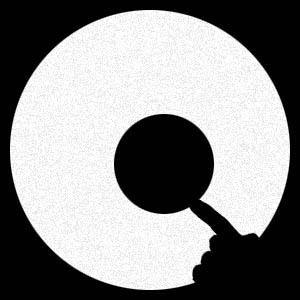
Collimating a Schmidt-Cassegrain
Collimation is critical to obtaining the best performance from your telescope. Aligning the optics of a Schmidt-Cassegrain telescope (SCT) is much easier than collimating a Newtonian telescope and can easily be learned by any user. However, there are some tricks to doing it right, and some things to avoid. If done right, collimation should only be necessary every few months. If you find it necessary to collimate your telescope every few weeks, the mirror is probably not being locked down properly after adjustment.
Note: In our experience, the original screws on an SCT secondary mirror are much better to use for collimation purposes than the aftermarket thumbscrews that can be added. Thumbscrews cannot be turned as precisely, making accurate alignment difficult. Also, thumbscrews do not hold the mirror as tightly, increasing the need to collimate more often. Thumbscrews also tend to make people "collimation happy," tending to collimate a scope far more often than necessary. Under normal use, you should be able to go months without collimating a telescope.
Tools
Unlike collimating a Newtonian, there are no special tools required for an SCT. However, you will need to test the collimation on a star, so it must be clear and dark. Otherwise, all you will need is a screwdriver to adjust the screws on the secondary mirror.
Outline of Procedure
Collimating an SCT is simply a matter of adjusting the three screws on the secondary mirror. This changes the tilt of the mirror and aligns it with the (fixed) primary mirror. The tilt of the mirror is tested by viewing an out-of-focus star image through the telescope.
Star Test
It is very important to let the telescope thermally stabilize before collimation. A scope that is still cooling down to ambient temperature will produce a heat spike as warm air radiates off the optics. This can distort the star image and make the telescope appear out of collimation when it is not.
For the star test, use a relatively high power eyepiece. A 10 or 12mm is a good choice for most SCTs, providing a magnification of 200-300x.
Choose a fairly bright (1st magnitude) star for the test. It is important that the star be centered in the field of view when testing collimation. A star at the edge of the field may be distorted, especially at lower powers, and could make the telescope appear out of collimation when it is not.
Defocus the star to produce a donut shape. The hole in the donut is the shadow of the secondary mirror. If the hole is offset from the center of the star, the collimation must be adjusted.

Above: Appearance of a defocused star in an uncollimated SCT
Adjusting the Collimation
Now the trick is figuring out which screw to turn. The low-tech trick is to reach up in front of the telescope and stick a finger in front of theaperture. You will see the shadow of your hand in the star image. Move your hand around until it reaches the narrowest (or widest) part of the donut. Take a look at the secondary mirror and see what screw your finger is nearest to (or opposite from). It doesn't matter whether you use the narrow or fat part of the donut, or whether your finger ends up next to a screw or across from one. The only difference will be whether you tighten or loosen the screw.

Above: Finding the correct screw to adjust by pointing to the narrow part of the donut
Whether you tighten or loosen the screw you have found, depends on whether the image is inside or outside of focus. The usual method is to try tightening first and see if the star image improves. Also, note that turning a screw the correct direction will cause the entire star image to move toward the fat part of the donut (upper left in the diagram above). Begin by turning the screw about 1/8th of a turn.
If tightening one screw makes the collimation worse, return that screw to its starting position and try tightening the other two screws. The most important thing is that the screws end up snug in the end. Try not to loosen a screw without tightening the others to compensate. Leaving the screws loose can cause the collimation to be lost when moving the telescope.
After adjusting the screws, be sure to return the star to the center of the field of view by adjusting the position of the telescope. Once the adjustments have been completed, the screws should be snug and the image of the defocused star should appear perfectly concentric, as shown below.

Above: Perfectly collimated defocused star image
The star should focus down to nice point, with no asymmetric flaring. The overall sharpness of the star image will depend on the magnification and seeing conditions, but it should be symmetrical and perfectly round.

